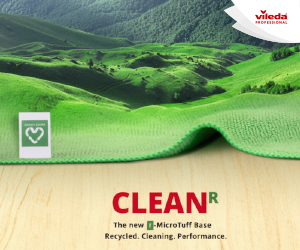Find out who are the winners of the 2023 Our Health Heroes Awards https://t.co/LQMdhHtz6y pic.twitter.com/GlPwx17Bz4
— HEFMA (@HEFMAUK) June 13, 2023
Bradford Royal Infirmary
Bradford Teaching Hospitals NHS Foundation Trust is an integrated trust, which provides acute services and a limited number of community in-patient health services. The trust serves a population of around 500,000 people from Bradford and the surrounding area and employs around 5,000 staff. The acute services are provided in two hospitals, Bradford Royal Infirmary and St Luke’s Hospital. The trust has four community hospitals; Westwood Park, Westbourne Green, Shipley and Eccleshill.
Bradford Royal Infirmary has around 900 beds and provides urgent and emergency services, medical and surgical services including general surgery, gynaecology; orthopaedics; ear, nose and throat (ENT); critical and high dependency care services; children’s and young people’s services. The hospital also provides an acute stroke service, consultant led maternity services, outpatient services for adults and children. There are also rehabilitation and therapy services provided.
We inspected the trust, which included this hospital from 21 to 24 October 2014 and undertook an unannounced inspection on 4 November. We carried out this inspection as part of our comprehensive inspection programme.
Overall, we rated Bradford Royal Infirmary as requires improvement. We rated it inadequate for safety, good for being caring and requires improvement for being effective, responsive to patient’s needs and being well-led.
We rated surgery, end of life, maternity and gynaecology services as good. Urgent and emergency care (ED), medical, children and young people’s services were rated as requires improvement. We rated outpatients’ services as inadequate. The ratings within the report were based on the evidence gathered at the time of the inspection.
Our key findings were as follows:
• There had been changes in the leadership team at trust level, with some changes in the leadership and management within the divisions and clinical services at the hospital. Along with these changes there had been the introduction of new governance and assurance arrangements, which had yet to be embedded.
• We had serious concerns over the very large back log of patients waiting for a review of their outpatient care pathway. There were over 205,000 patient pathways to be reviewed. The trust had taken steps to address this and was validating the information on patients in the back log. However, we had concerns over the length of time it had taken to put in suitable actions and the time it would take to assess the impact on individual patients.
• Following the inspection we requested further information from the trust in accordance with Section 64(1) of the Health and Social Care Act 2008 (HSCA) regarding this backlog. The trust’s response indicated that actions were in place and that the backlog was reducing. The timescale for completing the review of all these patient pathways was March 2015.
• We were concerned about the skills and experience of some staff, particularly in the stabilisation room used for children waiting to be collected for transfer to another hospital for paediatric intensive care. An outcome from a serious incident related to the stabilisation room had not been acted upon. We raised these concerns with the trust. The trust acted on the concerns raised.
• The hospital building and estates were old and many areas were no longer suitable to meet the needs of patients or staff. In some areas space was compromised making moving patients and accessing hand wash sinks difficult and direct observation was limited. There were insufficient side rooms and in some areas such as children’s services there were insufficient bathing facilities.
• There was work in progress to increase and improve on the facilities within the hospital including the addition of a new wing to house the children’s service, critical care and improve endoscopy services. There was some anxiety amongst the staff working at the trust as to how the services would be reconfigured as part of the estate development.






